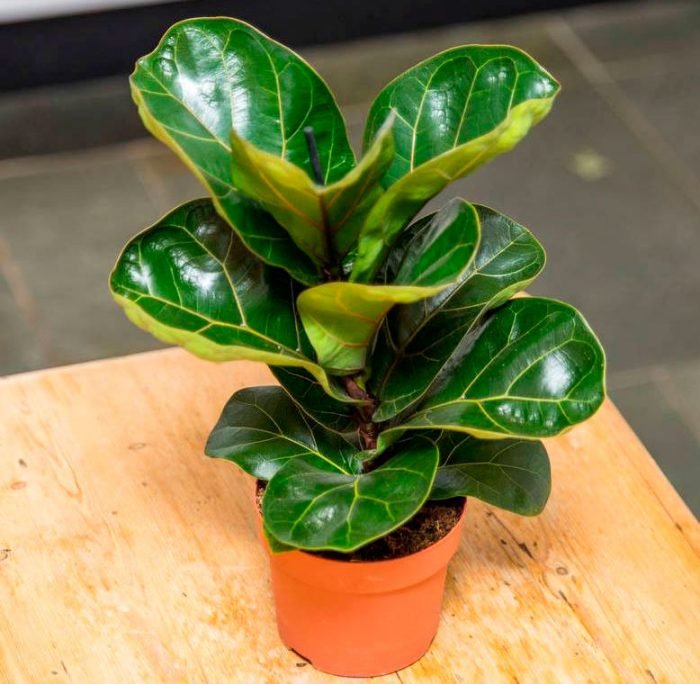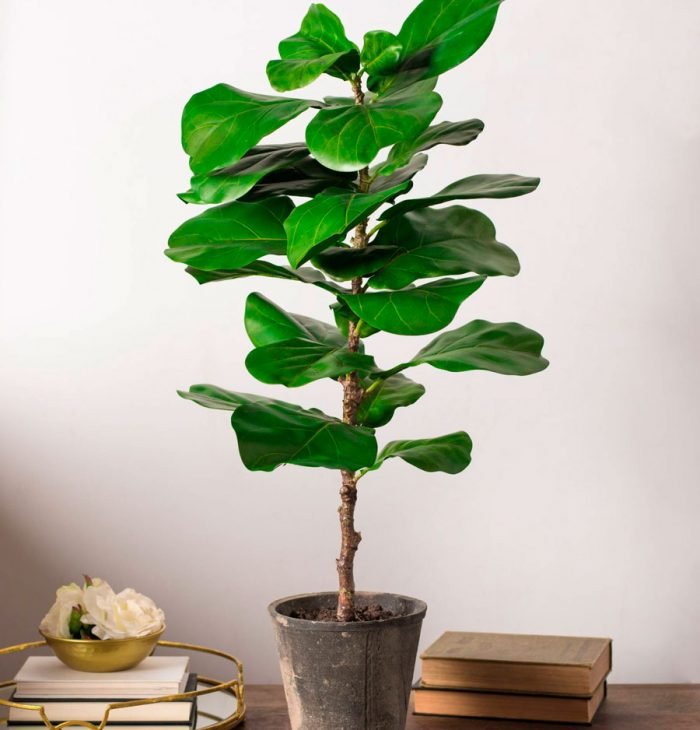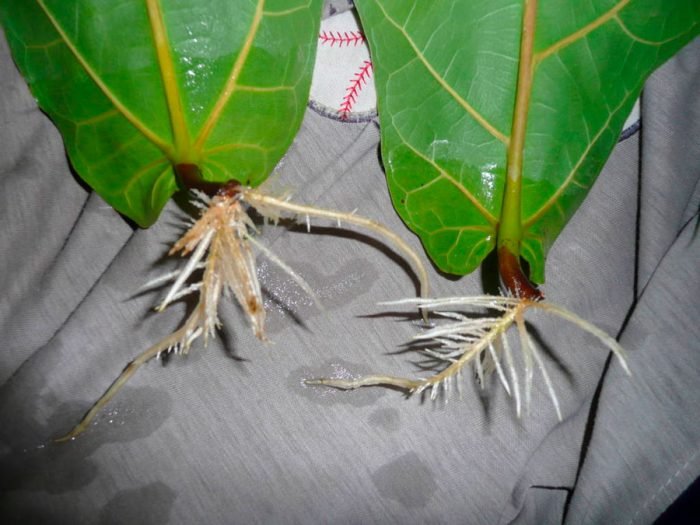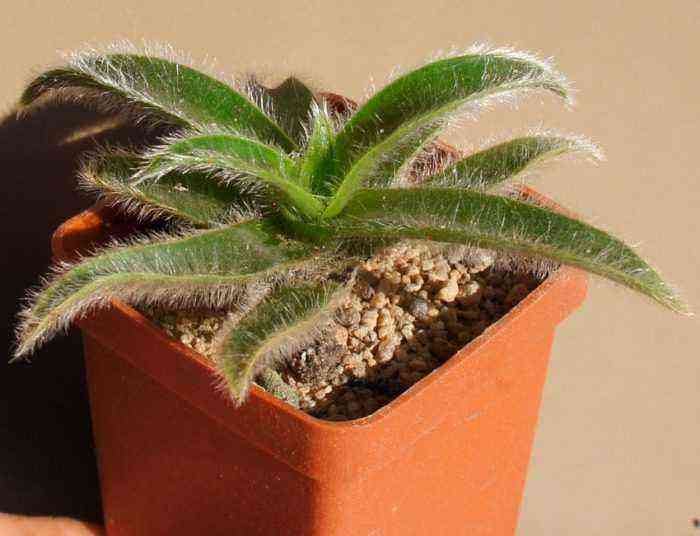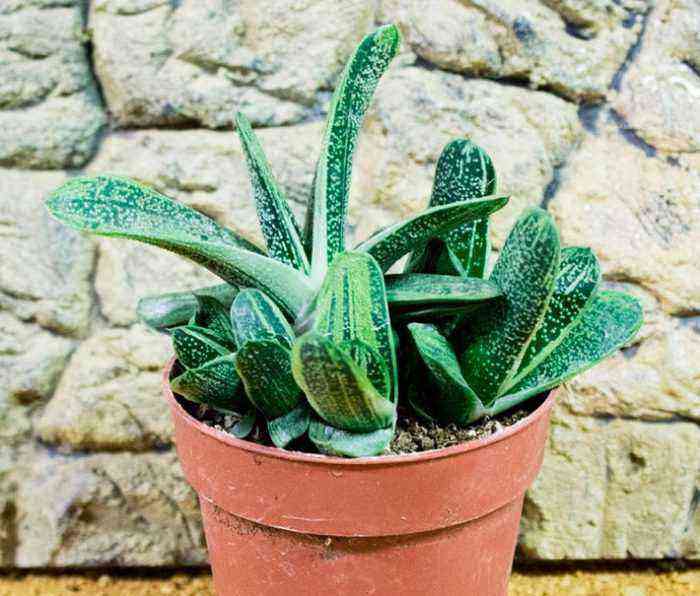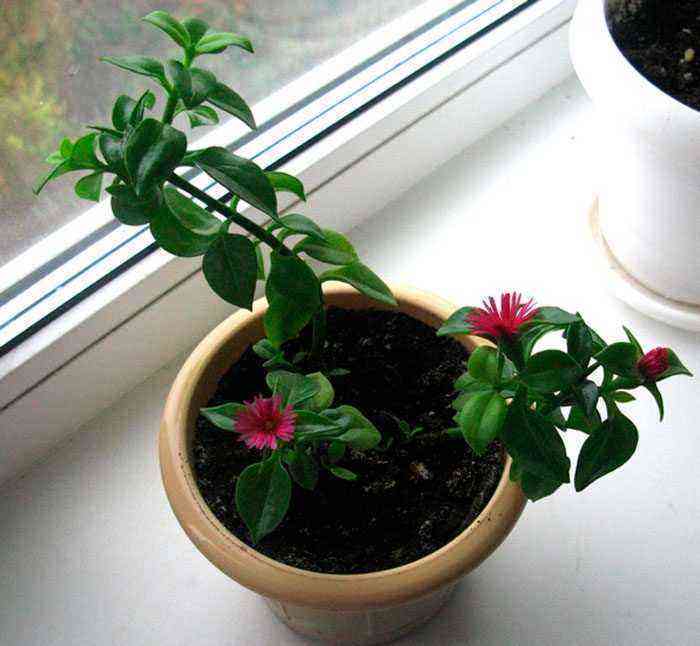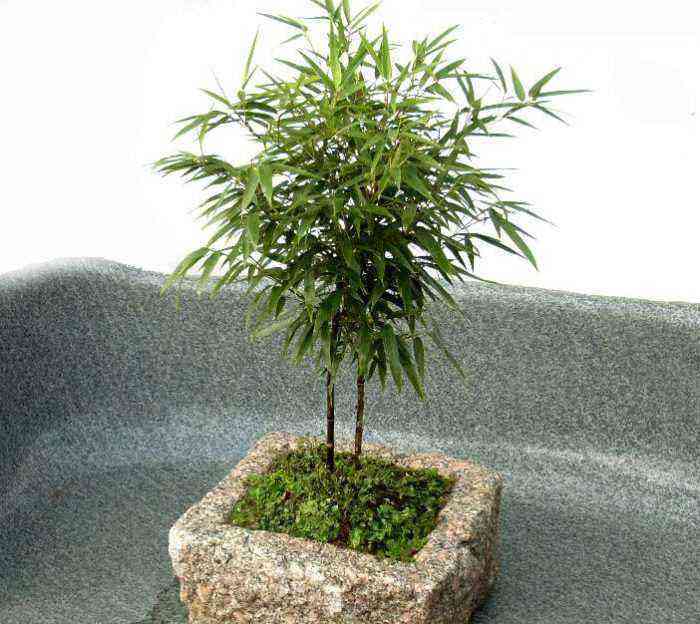Ficus lyrata is a perennial evergreen tree that is part of the Mulberry family. It began its existence in the form of an epiphyte, which was located at the top of the crown of other trees. Today, in natural conditions, the plant can be found in the form of an independent tree, the height of which can reach up to 15 meters.
This plant comes from tropical West Africa. In room culture, lyre ficus is grown as a tree plant, the average height of which is about three meters. Wavy dense leaf plates are rather large, while their surface is decorated with veins of a lighter color. It is very easy to care for such a plant, while it is characterized by rather rapid growth: the annual growth is about 25 centimeters. Remember that flowers are not formed on indoor ficus, but such a perennial is quite capable of growing an inexperienced grower.
Features of lyre ficus
Lyre ficus will be a wonderful decoration for any interior, as it has a spectacular unusual appearance due to large “corrugated” sheet plates. However, flower growers appreciate this tree not only for its beauty. The fact is that it is able to saturate the air in the room with oxygen, cleanse it of harmful impurities, and also fill the home with favorable energy.
In addition, such a plant is often used in the manufacture of various medicines that can help with a variety of diseases.
Brief description of cultivation
If you are looking for a plant that grows well at home and is undemanding to care for, then you should pay attention to the lyre ficus:
- Temperature conditions . In summer, the room should not be warmer than 28 degrees, and in winter – colder than 15 degrees.
- Air humidity . The optimal level is 70 to 80 percent. Responds well to everyday spraying.
- Illumination . Windows facing the south side of the room are best suited, but the bush needs shading.
- Watering . In the winter months, water is watered once every 7 days, and in the summer – more often than 4 times a week.
- Soil mixture . A fertile substrate for a slightly acidic reaction is suitable.
- Fertilizer . They are fed no longer than 6 months, 1 time in 30 days, and use mineral complex fertilizers for this.
- Transfer . It is carried out once every couple of years, while in large specimens, you can simply regularly replace the top layer of the substrate.
- Reproduction . Apical cuttings or layering.
- Trimming . Needs regular formative pruning as well as supporting supports.
- Features of care . It responds well to ventilation, therefore it grows well on open loggias or terraces. While the leaf plates are young, they can often fold, leaving traces. In this regard, such foliage should be monitored regularly.
Caring for ficus lyre at home
Flowering
Lyre ficus, growing in indoor conditions, as a rule, does not bloom. However, in favorable conditions, as close as possible to natural ones, light green syconia can form on the bush – these are small fruits with seeds inside.
Temperature
Since this plant is native to the tropics, it feels best in a room where it is warm and high in humidity. In summer, it grows and develops best at a temperature of 22-28 degrees. In the event that the ficus is not at rest in winter, then it is necessary to ensure that the room is not colder than 18 degrees.
Air humidity
This plant is one of the moisture-loving plants, so it needs high humidity. To maintain comfortable conditions for the growth of ficus, it is recommended to systematically moisten it from a spray bottle. The water must be well settled, and it must also be softened if necessary. After spraying, make sure that moisture does not accumulate in the leaf sinuses, as this can cause rot.
Illumination
Such a ficus needs a lot of bright light. For him, it is recommended to choose a well-lit window sill, or the sunniest place in the garden or on the loggia. In winter, the plant needs additional lighting, otherwise its foliage will become faded and grow very slowly.
Watering
Water ficus lyre in moderation. In the spring-summer period, watering is carried out regularly, on average three times a week. In winter, the frequency of watering should be reduced to one every 7 days.
Transfer
For planting and transplanting such a tree, a large ceramic pot is used. Pay attention to the fact that the ficus in a relatively short time is strongly stretched upward and forms large heavy leaf plates. In this regard, a powerful flowerpot should be chosen for the bush, which is highly resistant to overturning. While the tree is young, it is planted in a not very large container that corresponds to the size of the root system.
As long as the tree is young, it is transplanted regularly once a year with a complete replacement of the soil mixture. Mature plants do not need such frequent transplantation, as a rule, it is carried out only when necessary. If the bush is not sick and the pot is not small for him, then you can simply replace the top layer of soil mixture in a pot with a thickness of 30 to 40 mm with a fresh substrate.
Substrate
Ficus has no special requirements for the composition of the soil mixture. For example, for its transplant, it is quite possible to use a purchased universal soil mixture, which should be neutral.
If you wish, you can prepare the substrate at home. For this, mix leaf and garden soil, as well as perlite or sand (2: 2: 1). Make sure to make a good drainage layer at the bottom of the pot, the height of which should be at least 30 mm.
Fertilizer
In order for the ficus to grow and develop within normal limits, it is recommended to systematically feed it. Do this once every 30 days (less often), from the first days of March until the onset of cold weather. To do this, use a complex mineral fertilizer in liquid form.
Trimming
In order for the lyre ficus to look neat and effective, it needs systematic formative pruning. If you do not cut the tree at all, then it can independently form an untidy crown. The fact is that such a plant is extremely difficult to build up lateral branches.
In order to force a tree growing in room conditions to branch well, at least six internodes should be cut off. However, it is necessary to leave at least 4–5 sheet plates. Thanks to this pruning, the juice begins to move up and down the plant, which will stimulate the formation and growth of lateral shoots.
After the end of the cut, wait for the milky juice to drain, while the cut should be made under the kidney, and it should be oblique. Experts also recommend rinsing the cut site with cold running clean water, after which it is covered with wood ash.
The rest period
There are no winters in the homeland of ficus. However, when grown indoors in regions with cold winters, most often the plant enters a dormant state. Since the lighting is more scarce in winter and the humidity level is lower, its development becomes slower. The bush comes to life with the onset of spring.
If the plant is at rest, then it is moved away from a working heating device, while the temperature in the room should be at least 15 degrees. The bush must be provided with compulsory supplementary lighting.
Methods of reproduction
Cutting
Ficus lyre can be propagated by apical semi-lignified cuttings. Their harvesting is carried out during the formation of the crown. Most often, they are put on rooting in pre-disinfected water. When the roots appear on the handle, they are planted in a fertile and loose soil mixture. If you are planting cuttings for rooting directly into the substrate, then they should be provided with greenhouse conditions, while they must be ventilated.
Reproduction by layers
The tree can be propagated by air layers. To do this, an incision must be made on its trunk, stepping back 50 mm from the sheet plate. A chip should be installed in the incision, which is pre-soaked in a solution of an agent that stimulates root growth. Sphagnum moistened with water is placed on top of the chips. Cover the incision from above with a film. The first roots should appear after about 3 months.
Possible problems
Due to mistakes in care with indoor lyre ficus, problems such as:
- The spots on the leaf blades are brown . They are formed due to the regular stagnation of water in the soil mixture.
- Flying around foliage . This can happen if the room is too hot and the humidity is low.
- Slow growth . Associated with a lack of nutrients or too little lighting.
The following pests can settle on such a plant: false shield, spider mite, shield and mealybug.

